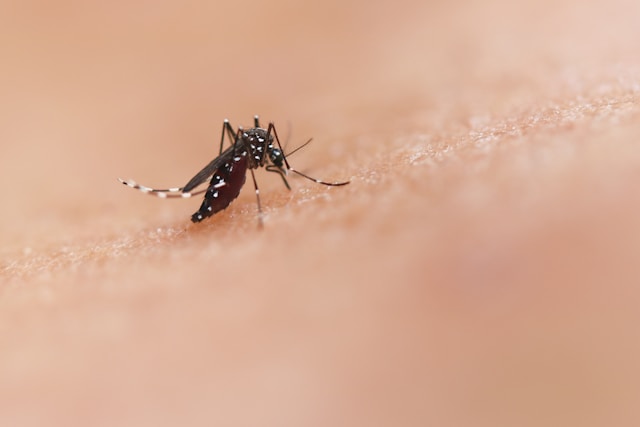
Malaria continues to pose a major health threat worldwide, resulting in millions of cases and deaths each year. Although considerable advancements have been made in combating the disease, it continues to impact various areas, especially in sub-Saharan Africa. Throughout the years, global initiatives to combat malaria have evolved, adopting diverse approaches to decrease transmission, provide treatment to those infected, and ultimately strive for its eradication. This piece examines the progress achieved in the battle against malaria and outlines future steps to further enhance global malaria control.
Progress in Malaria Control
1. Advances in Treatment
Since their introduction, Artemisinin-Based Combination Therapies (ACTs) have been the primary treatment for malaria. These therapies combine artemisinin derivatives with other antimalarial drugs, ensuring effective treatment while minimizing the likelihood of resistance.
New Drug Developments: Recent advancements include the development of novel antimalarial drugs and treatments. Drugs like KAE609 and ELQ-300 show promise in overcoming resistance and improving treatment options.
2. Vaccination Initiatives
RTS,S/AS01 Vaccine: The RTS,S/AS01 vaccine, also known as Mosquirix, is the first malaria vaccine to receive regulatory approval. It has been used in pilot programs in Africa, offering partial protection against Plasmodium falciparum.
The focus of current research on next-generation vaccines, like R21/Matrix-M and the PfSPZ vaccine, is to enhance protection against malaria by offering a wider and longer-lasting shield.
3. Vector Control Measures
ITNs, also known as Insecticide-Treated Nets, have been extensively distributed in regions with high malaria prevalence. Their distribution has proven to be highly effective in reducing mosquito bites and the transmission of malaria. Additionally, ongoing advancements in the formulation and durability of ITNs have further enhanced their effectiveness.
Indoor Residual Spraying (IRS) is a method that involves the application of insecticides on indoor surfaces, effectively eliminating mosquitoes and reducing the spread of diseases. The effectiveness of IRS programs is being enhanced through advancements in insecticide technology and the management of insecticide resistance.
4. Diagnostic and Surveillance Improvements
Rapid Diagnostic Tests (RDTs) have brought about a significant transformation in malaria diagnosis by delivering prompt and precise results directly at the site of care. As a result, case detection and treatment outcomes have been greatly enhanced.
Improved data collection and surveillance systems, involving advanced technologies like geographic information systems (GIS) and mobile health technologies, are enhancing the tracking and intervention methods for malaria.
5. Community Engagement and Education
Public health campaigns and community engagement initiatives have been implemented to increase knowledge and understanding about preventing malaria, treating it effectively, and the significance of seeking prompt medical attention.
In order to reduce malaria transmission, it is crucial to implement behavioral interventions that focus on altering behaviors, such as promoting the usage of bed nets and ensuring adherence to treatment regimens.
Future Directions in Malaria Control
1. Tackling Drug and Insecticide Resistance
In order to adjust treatment protocols and vector control strategies, it is crucial to continuously monitor drug and insecticide resistance. The development of novel drugs and insecticides with unique mechanisms of action is a top priority.
Alternative Vector Control Strategies: Research into alternative vector control methods, such as genetic modification of mosquitoes and biological control agents, aims to reduce reliance on chemical insecticides and address resistance issues discovering the world of sparkling wine.
2. Advancing Vaccine Research
Ongoing research is dedicated to enhancing vaccine efficacy and extending the duration of protection. Key areas of focus include the combination of various vaccine approaches and the exploration of novel antigens.
In order to achieve broader coverage and make a significant impact, it is crucial to expand the availability and accessibility of malaria vaccines, especially in regions with a high risk of infection.
3. Integrating Malaria Control with Other Health Initiatives
By integrating malaria control efforts with other health initiatives, such as programs for maternal and child health, the overall health outcomes can be enhanced, leading to improved access to care.
Collaboration across various sectors such as agriculture, environment, and urban planning can effectively tackle the underlying factors of malaria transmission and develop long-lasting interventions.
4. Addressing Climate Change and Environmental Factors
In order to effectively control malaria, it is crucial to adapt to climate change and effectively manage environmental factors that contribute to the transmission of the disease. Employing predictive modeling and adaptive interventions can assist in minimizing the effects of climate fluctuations.
Encouraging sustainable practices and minimizing ecological impacts can effectively aid long-term malaria control and prevention endeavors.
5. Enhancing Global Collaboration and Funding
The importance of international partnerships in coordinating malaria control efforts and sharing resources cannot be overstated. Governments, NGOs, and research institutions must come together to strengthen global partnerships and foster collaboration.
To maintain progress and tackle emerging challenges, it is imperative to ensure a consistent and enhanced allocation of funds towards malaria research, prevention, and treatment programs.
Conclusion
Global efforts to combat malaria have achieved significant progress through advancements in treatment, vaccination, vector control, and community engagement. However, challenges such as drug and insecticide resistance, climate change, and healthcare access continue to pose threats. Future directions in malaria control focus on addressing these challenges through innovative strategies, integrating efforts with other health initiatives, and enhancing global collaboration. By maintaining momentum and investing in research and development, the goal of reducing and eventually eradicating malaria remains within reach.
Global Efforts to Combat Malaria: Progress and Future Directions




